Step 1 Initial Layer of Wax
|
|
|
With the prepared tooth in your hand (not screwed into the typodont), apply a thin layer of BLUE wax to the entire preparation. The wax should be of even thickness (approximately 0.5mm) and cover the entire surface of the crown (prepared tooth surface). The wax should go to and slightly beyond the cavosurface margin of the preparation initially. Remove gross excess wax now. The final finishing and refinement of the margins will be managed at a later stage in the waxing procedure. The margins will be sealed and properly contoured using the beavertail portion of the BEAVERTAIL/ACORN burnisher in one of the last steps of the procedure. Use the PKT1 instrument to apply the wax. There should be no voids in the wax. The type of margin around the preparation is supragingival and near the CEJ (cementoenamel junction). The type of margin is called a chamfer. The margin of the preparation is smooth and continuous. Therefore, if there is any irregularity or discontinuity in your waxed margin, the waxing is incorrect and requires modification.
|
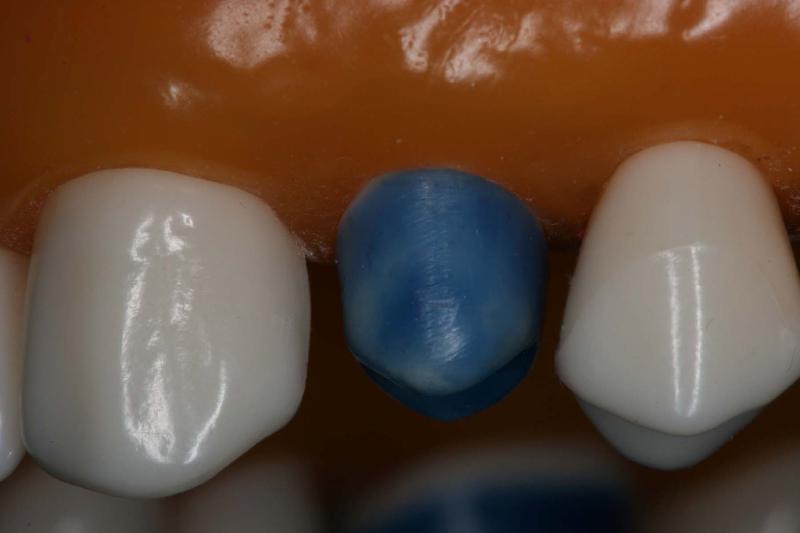
Initial layer of wax
Buccal View
|
|
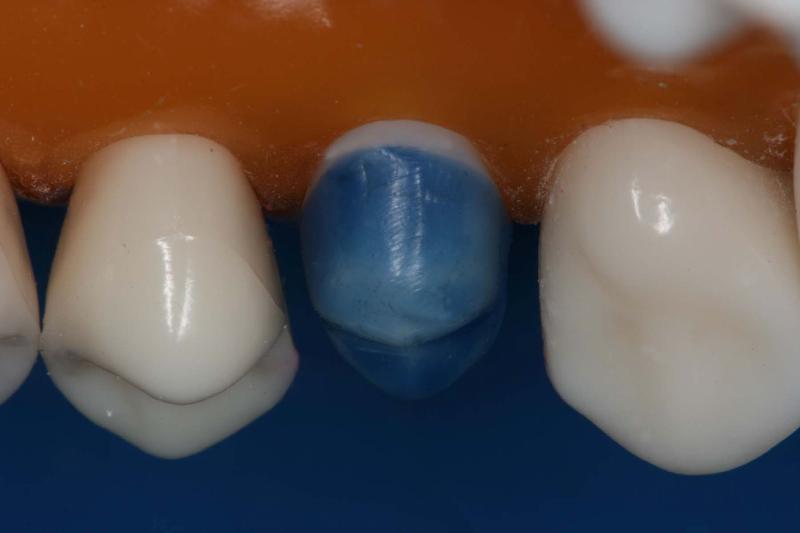
Initial layer of wax
Lingual View
|
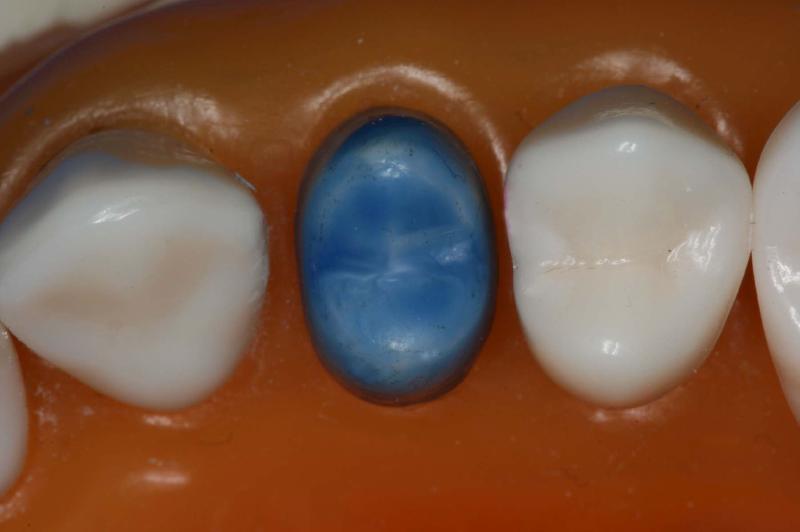
Initial layer of wax
Occlusal View
|
Step 2 Establishing Mesial and Distal Contacts & Cusp Tips
|
|
|
Screw the prepared tooth into the typodont. Using RED wax and the PKT1 instrument, add a cone to contact the distal portion of the adjacent maxillary canine and the mesial of the maxillary second premolar. This step establishes the contacts that must be maintained throughout this exercise. The position of the contacts coincides with the mesial and distal crests of curvature of this tooth, which are in the occlusal portion of the middle third of the crown. Evaluate the amount and location of the wax cone from the buccal, lingual and occlusal views as shown below.
The buccal cusp tip is offset to the distal and the length is established by evaluating the curve of Spee and placing the buccal cusp along this arc.
The buccal and lingual cusps are visible in the lingual view. The buccal cusp is longer and is offset to the distal. The lingual cusp is approximately 1mm shorter than the buccal cusp and is offset to the mesial. The lingual cusp of the maxillary first premolar should contact the distal marginal ridge of the mandibular first premolar and the mesial marginal ridge of the mandibular second premolar in an ideal Class I occlusion. Check the occlusion before moving to the next step.
|
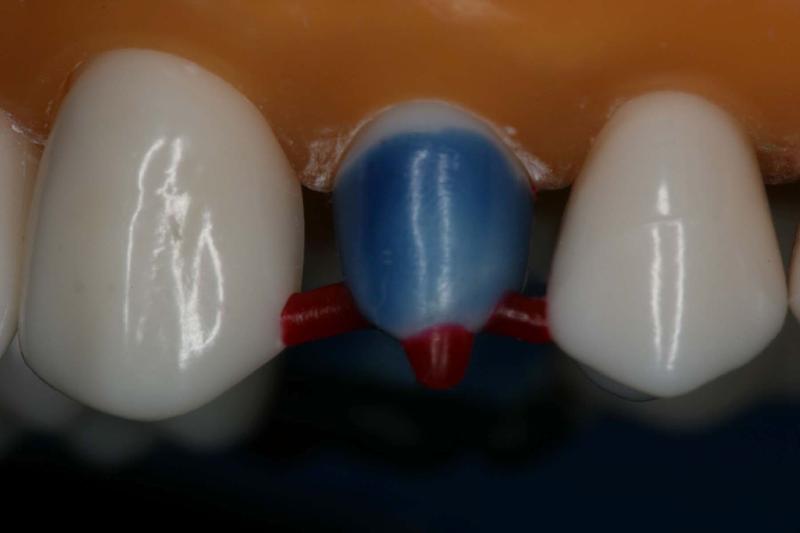
Mesial and distal contacts & Buccal Cusp
Buccal View
|
|
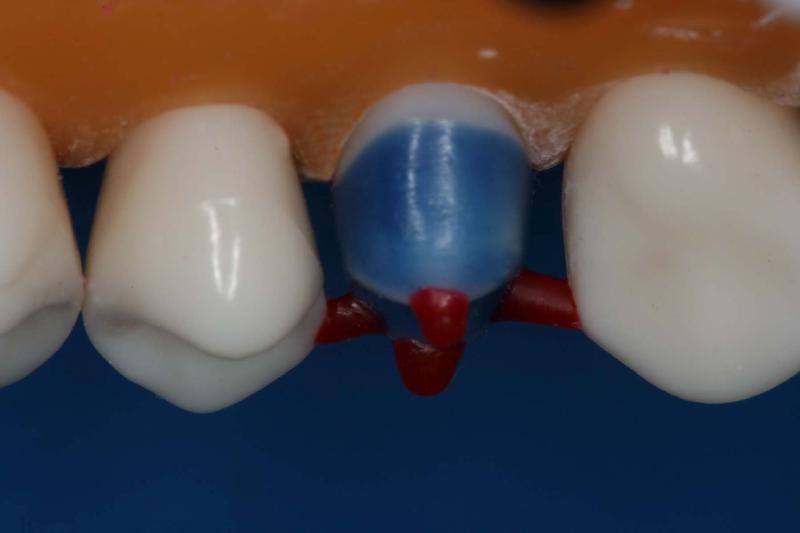
Mesial and distal contacts & Buccal and Lingual Cusps
Lingual View
|
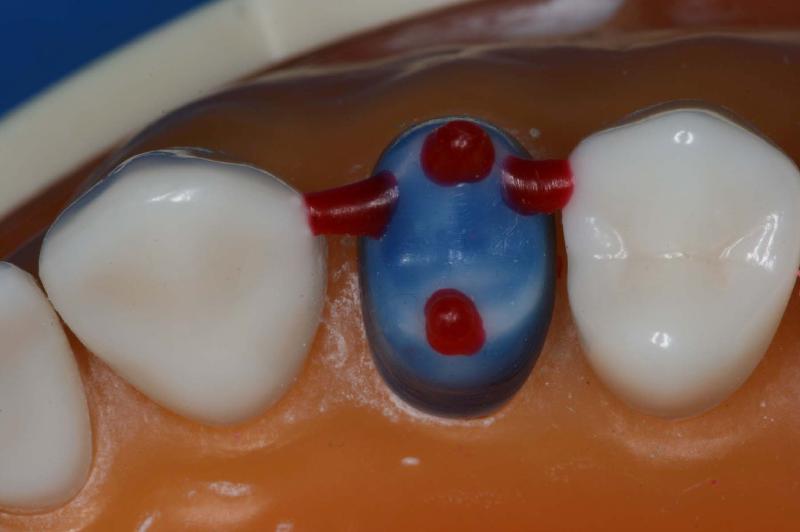
Mesial and distal contacts & Buccal and Lingual Cusps
Occlusal View
|
Step 3 Establishing the Cusp Ridges
|
|
|
Screw the prepared tooth into the typodont. Using a PKT1 and GREEN wax, establish the mesial and distal cusp ridges for the buccal and lingual cusps. The buccal cusp tip should be offset to the distal as the mesial cusp ridge is longer than the distal cusp ridge. Each of buccal cusp ridges are relatively straight. The lingual cusp tip should be offset to the mesial as the mesial cusp ridge is shorter than the distal cusp ridge. Both lingual cusp ridges are curved. Evaluate amount and location of wax from the buccal, lingual and occlusal views. Adjustments may be made with the tooth in or out of the typodont. The goal is to add the correct amount of wax in the correct location using your wax instruments. Minimal carving should be required.
|
|
Step 4 Establishing the Triangular Ridges
|
|
|
Using a PKT1 and RED wax, build the triangular ridges of the buccal and lingual cusps. Begin by placing the wax near the central developmental groove and draw the wax toward the buccal cusp tip. The triangular ridge of the buccal cusp should be triangular in shape and convex both mesiodistally and buccolingually. Do the same for the triangular ridge of the lingual cusp. The two triangular ridges are positioned in a buccolingual orientation and create a transverse ridge.
|
|
Step 5 Establishing the Contour Bars
|
|
Remove the tooth from the typodont to begin this step. Using a PKT1 and GREEN wax, establish the mesiobuccal contour bar, middle buccal contour bar and the distobuccal contour bar. On the lingual surface establish the mesiolingual, distolingual and middle lingual contour bars. Assess the contacts after adding the lingual contour bars. Carefully close the typodont. If the contacts are heavy, heat the wax using a PKT1 or 2 instrument to achieve an ideal location, size and magnitude of the contact. See the final picture for the location and size of the contacts.
|
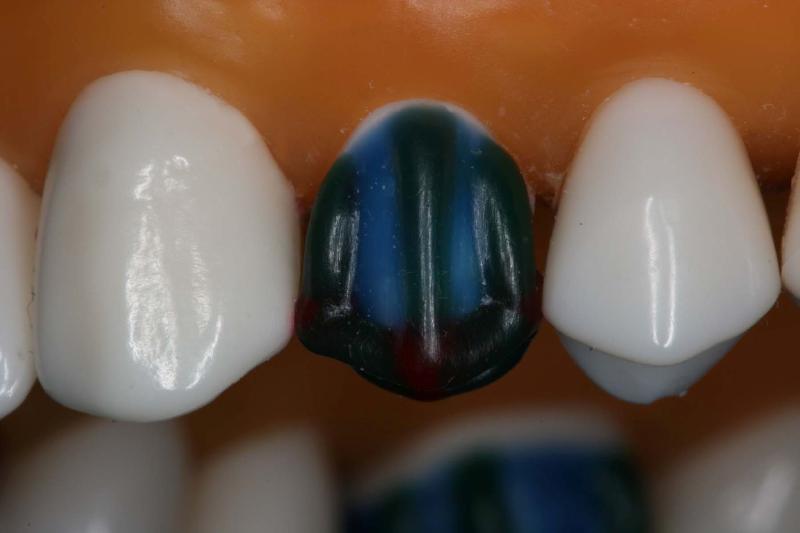
Cusp ridges and the mesiobuccal, middle buccal and distobuccal contour bars
Buccal View
|
|
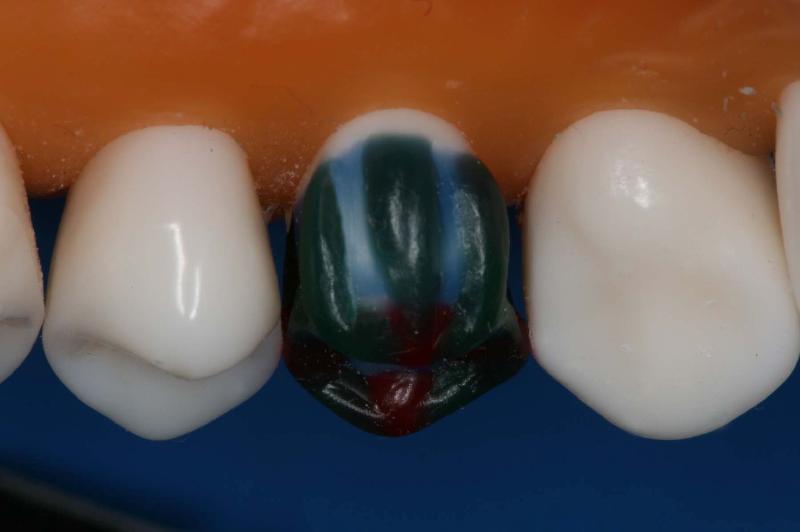
Cusp ridges and the mesiolingual, middle lingual and distolingual contour bars
Lingual View
|
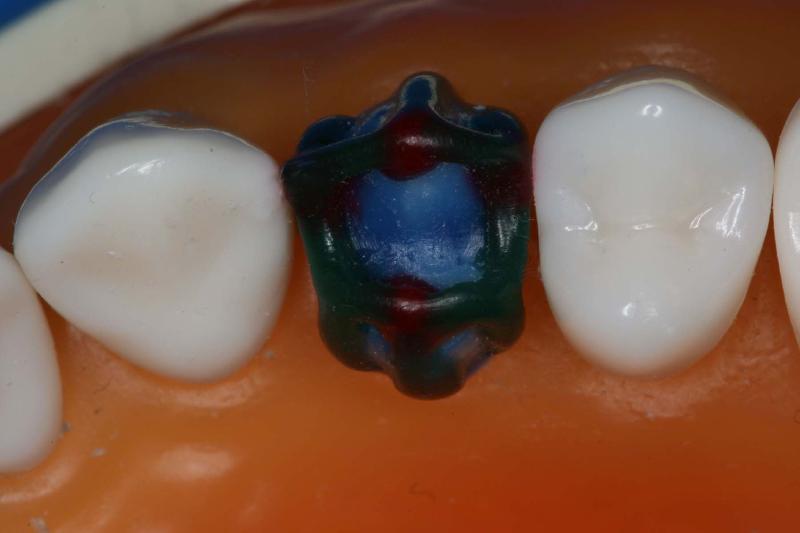
Cusp ridges, marginal ridges and contour bars
Occlusal View
|
|
Step 6 Final Steps

This content requires HTML5 & Javascript or Adobe Flash Player Version 9 or higher.
Click and hold the cursor down on the 3D model above to rotate the model (or click on the 3D model and use the arrow buttons).
|
|
|
Fill in the remaining missing tooth structure using the PKT1 or PKT2 instruments using WHITE wax. Most of this step can be completed with the prepared tooth out of the typodont. Use the BEAVERTAIL/ACORN burnisher, the CD 4/5 (discoid cleoid) carver to complete the final contour and finish of the wax-added exercise. Use a piece of nylon stocking or pantyhose to complete the finish. Re-wax your margins using BLUE WAX. Use your BEAVERTAIL/ACORN burnisher to contour and seal the margins. Evaluate the margins of your wax pattern out of the typodont (using magnification). Screw the tooth back into the typodont and evaluate the completed wax pattern. After securing the prepared tooth with the completed wax pattern in the typodont, evaluate
1. mesial and distal contacts (location, magnitude and dimension)
2. buccal and lingual crests of curvature (location and extent)
3. anatomical details
4. smoothness of surface (check for subsurface voids)
5. location and magnitude of maximum intercuspation contacts
|
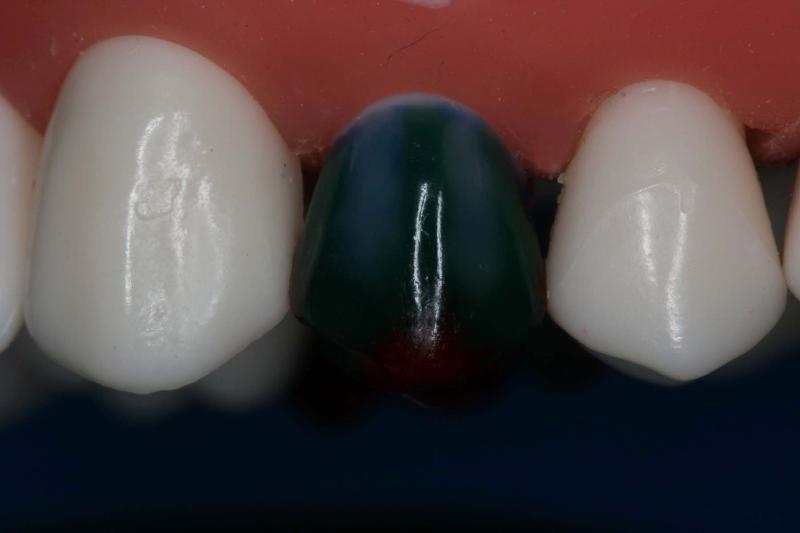
Final wax-added exercise
Buccal View
|
|
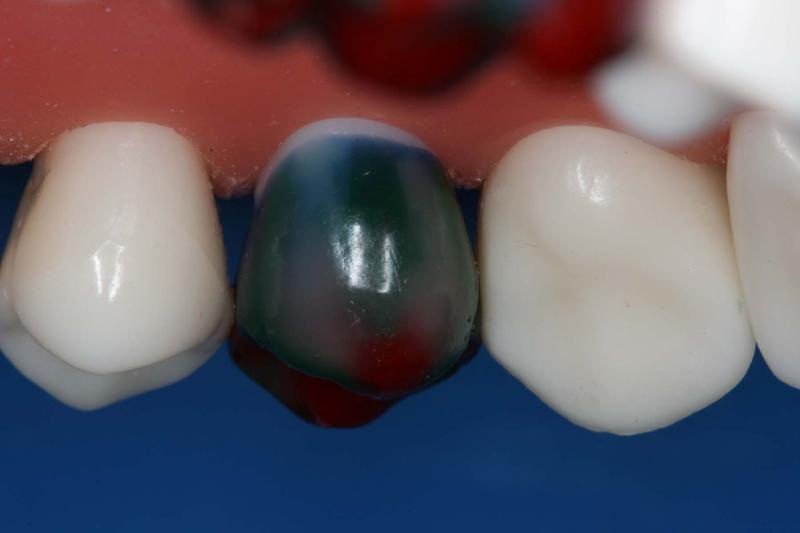
Final wax-added exercise
Lingual View
|
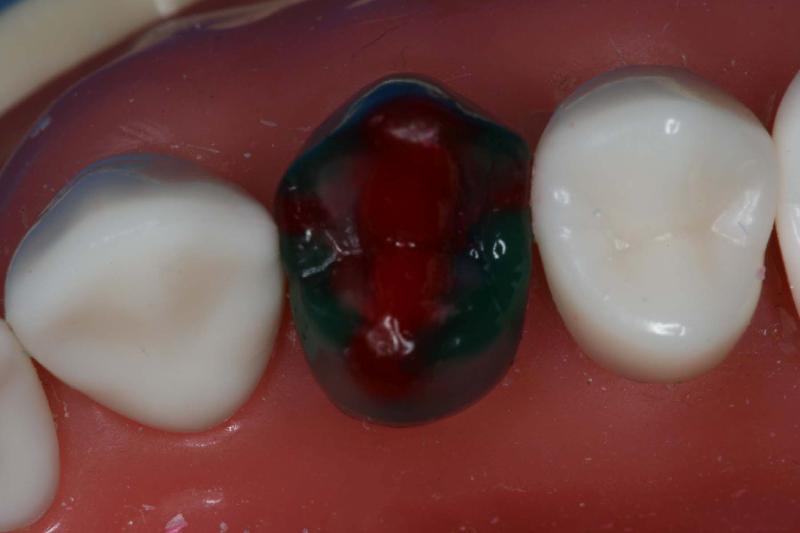
Final wax-added exercise
Occlusal view
|
Contact position and size
The buccal cusp of the mandibular first premolar contacts the mesial marginal ridge of the maxillary first premolar and the distal marginal ridge of the maxillary canine (orange dots) in maximum intercuspation.
The buccal cusp of the mandibular second premolar contacts the distal marginal ridge of the maxillary first premolar and the mesial marginal ridge of the maxillary second premolar (yellow dots) in maximum intercuspation.
The lingual cusp of the maxillary first premolar contacts the distal marginal ridge of the mandibular first premolar (white dot) in maximum intercuspation.
|
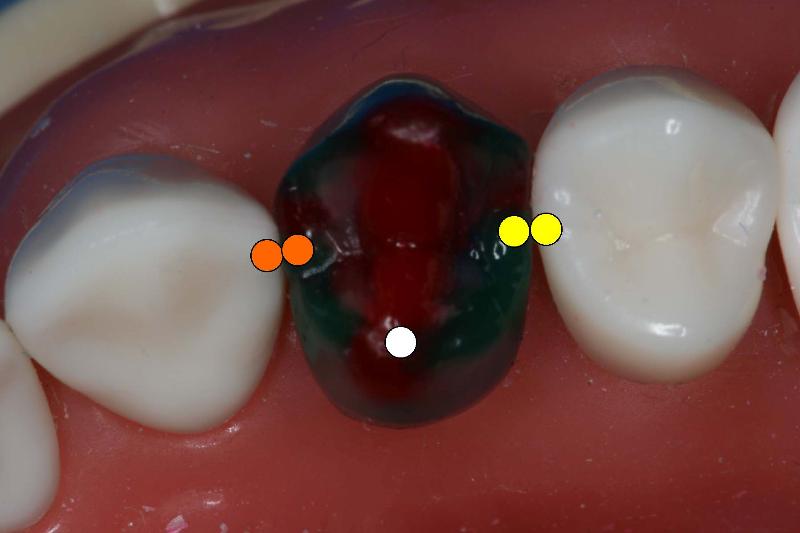
Final wax-added exercise
Occlusal View
|
![]() This content requires HTML5 & Javascript or Adobe Flash Player Version 9 or higher.
This content requires HTML5 & Javascript or Adobe Flash Player Version 9 or higher.












